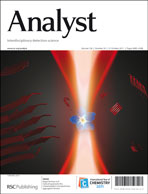An electrochemical DNA sensor based on a layers–film construction modified electrode
Abstract
This work developed a relatively inexpensive and layers–film construction electrochemical sensor for DNA recognition and its performance was investigated. The Fe3O4 magnetic


 Please wait while we load your content...
Please wait while we load your content...